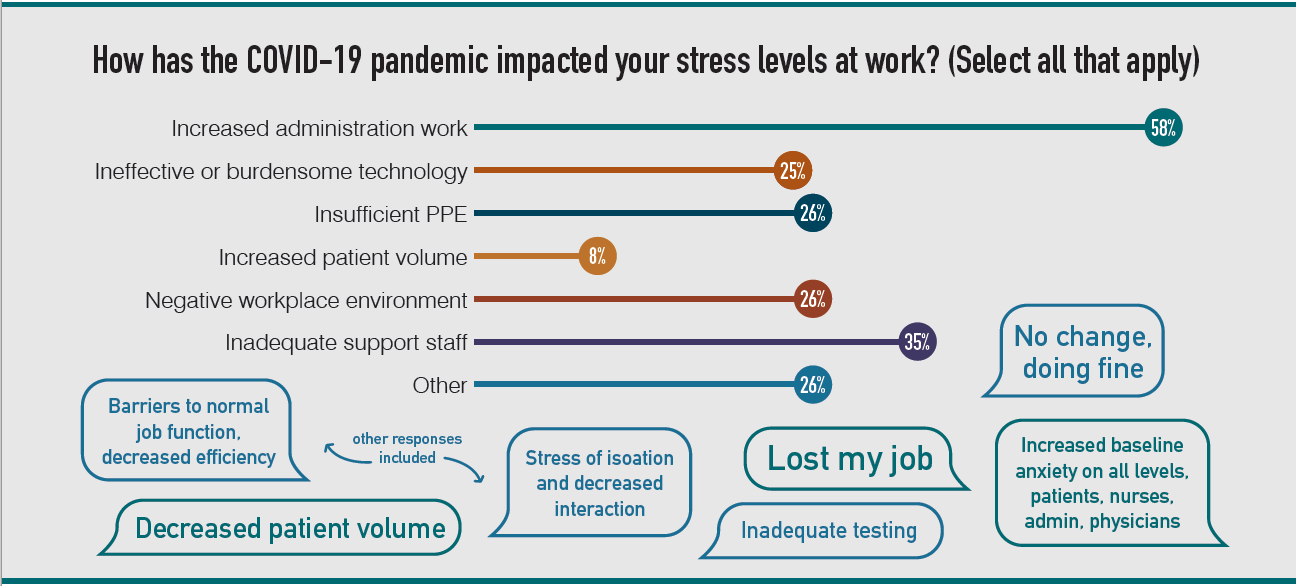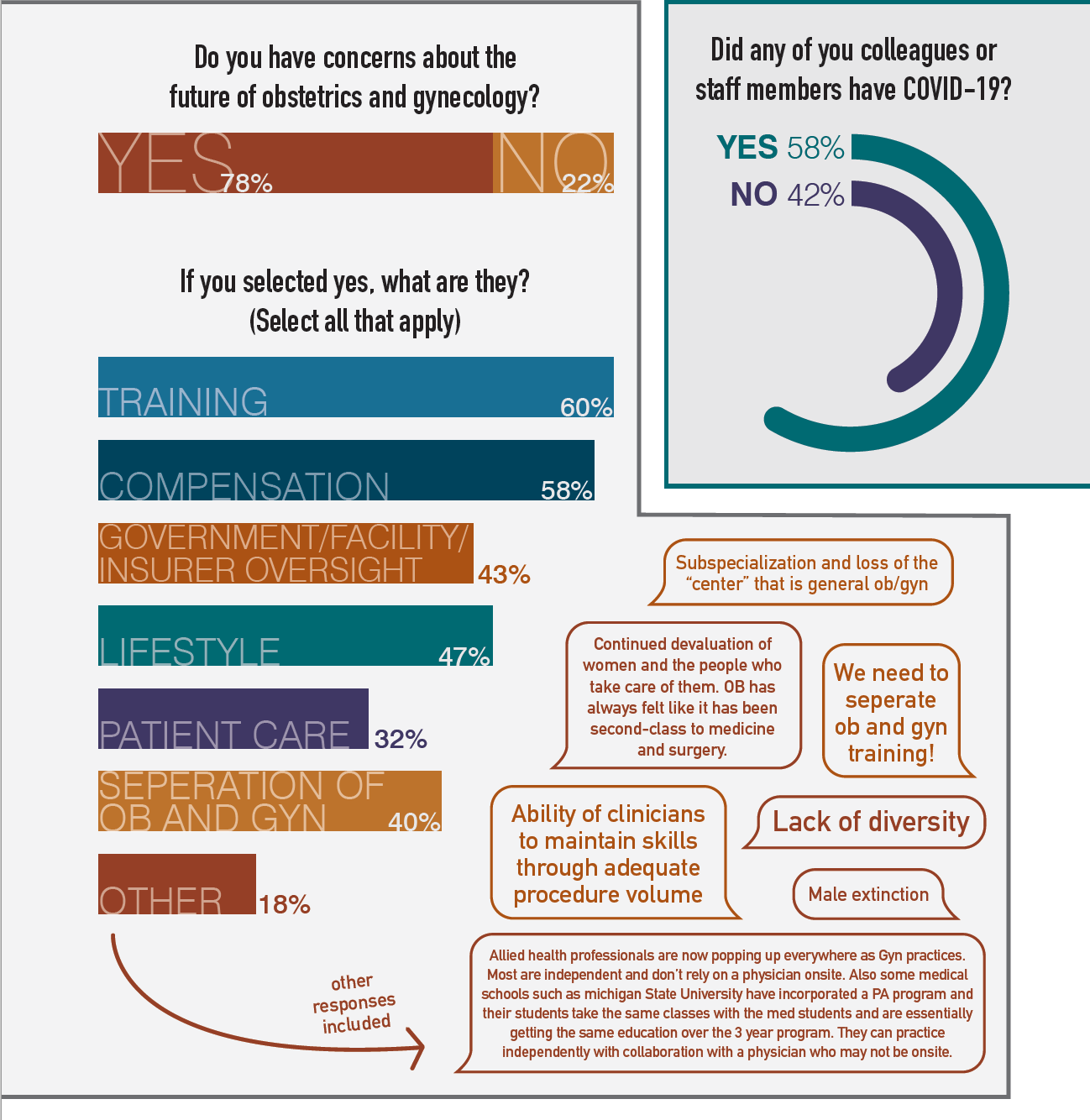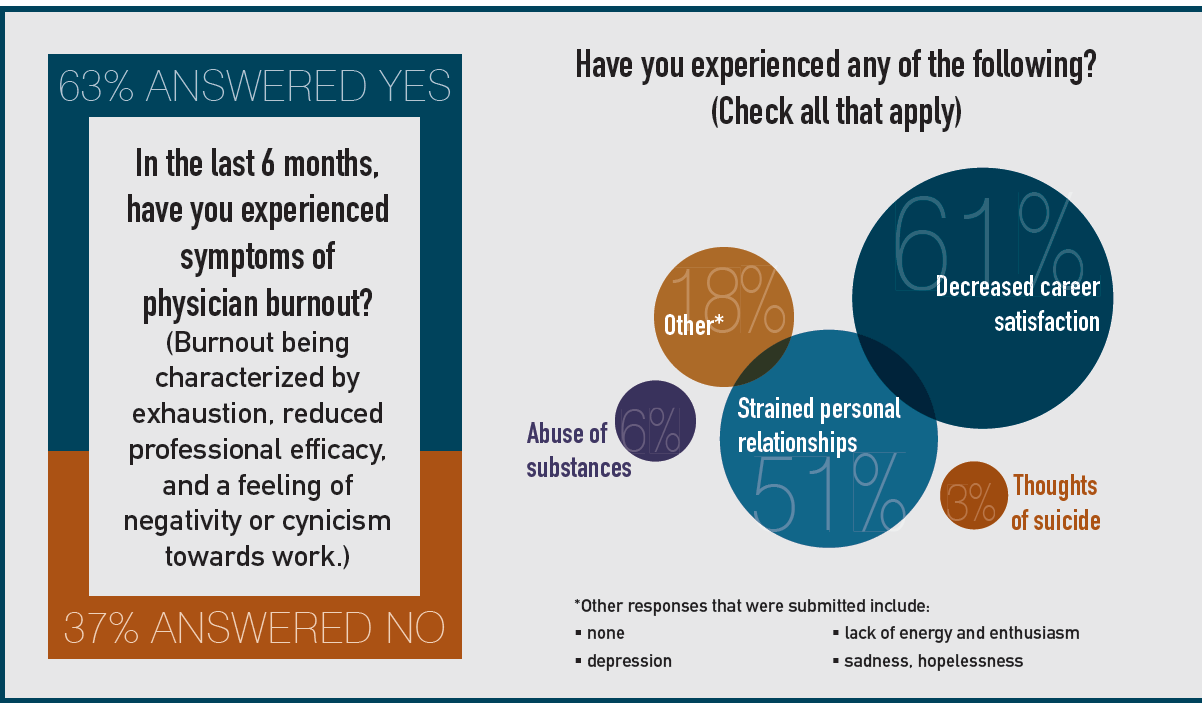State of the Industry 2020
COVID-19, racial and gender equality, the rising role of telehealth - many factors converged to make 2020 a year we won’t soon forget. Here is where the industry stands.
This year was strange indeed, with new levels of work and personal stress previously unimagined, particularly for those who have been on the frontlines of the coronavirus disease 2019 pandemic. Amid the chaos, readers have weighed in on Contemporary OB/GYN’s State of the Industry survey. Here are the results.
Nearly 85% of respondents did not have COVID-19 themselves, nor did an immediate family member. However, nearly 58% of respondents reported having colleagues or staff who did.

Perhaps most obviously, the virus impacted stress levels at work due mostly to increased administrative work, with 58% reporting that as the biggest factor. Others reported a decreased patient load during this time.

When asked for feedback on key topics from the year, readers also responded to the impact of telehealth. In terms of telehealth, nearly 80% of respondents said that they began offering those services this year. Issues encountered in offering telehealth include not getting reimbursement. If practicing ob/gyns had the opportunity to choose this specialty again, would they? Nearly 80% of respondents said they would.
Because race relations were also a major topic this year, we asked readers to weigh in on whether they think racism and unconscious bias are an issue for their practice. Of respondents, 58% said no. One respondent commented, “I feel that we have a very diverse practice as well as staff.” Among the 42% that responded yes, one commented, “It is mostly unrecognized, but patients are treated differently.”

When considering factors that were most important to respondents in choosing this specialty, the highest was the ability to care for women throughout their lives (nearly 66%); job satisfaction (62.2%); and the intellectual stimulation of the work, with nearly 60%. Each respondent was able to choose three answers. Some respondents gave answers such as being able to do surgical work; financial security; and the variety of work as their reasons for choosing this field.
Of all respondents, 78% said they have concerns about the future of obstetrics and gynecology. Of the responses, 60% have concerns about training; 58% have concerns about compensation, and nearly 47% have concerns about lifestyle.

Respondents cited lack of diversity; adequate pool of qualified practitioners; and male extinction as their other concerns for the future of the practice. One respondent said “continued devaluation of women and the people who take care of them. OB has always been second class to medicine and surgery.” One other cited “access to care across the country, particularly rural,” as a chief concern.
Quality of care also seemed to be a concern.
As one respondent pointed out, “Allied health professionals (are) now popping up everywhere as gyn practices. Most are independent and don’t rely on a physician onsite. Also, some medical schools such as Michigan State University have incorporated a PA program and their students take the same classes with the med students and are essentially getting the same education over the 3-year program. They then can practice independently with collaboration with a physician who may not be on site.”
__
What are your concerns about the future of the ob/gyn practice?
You can email Editor-in-Chief Catherine Y. Spong, MD at cspong@mjhlifesciences.com or our editorial staff at COGEditorial@mmhgroup.com.

FDA approves Visby’s test for at-home STI identification
Published: March 28th 2025 | Updated: March 28th 2025The FDA has approved Visby Medical’s at-home sexually transmitted infection test, allowing women to screen for chlamydia, gonorrhea, and trichomoniasis without a prescription.
Read More
